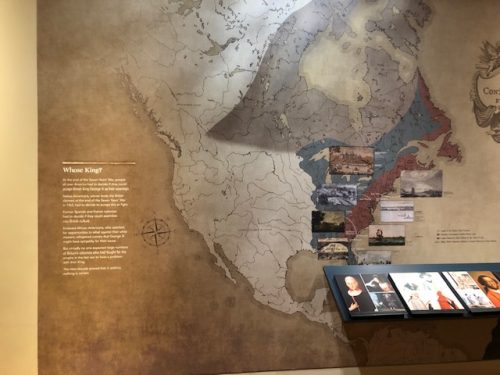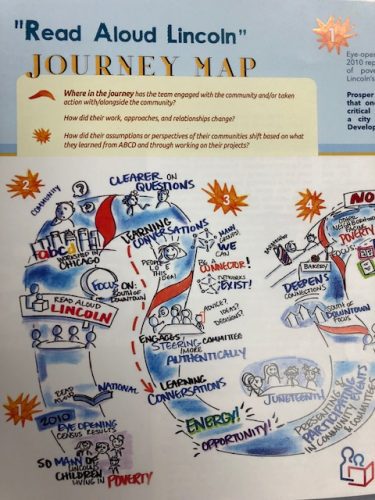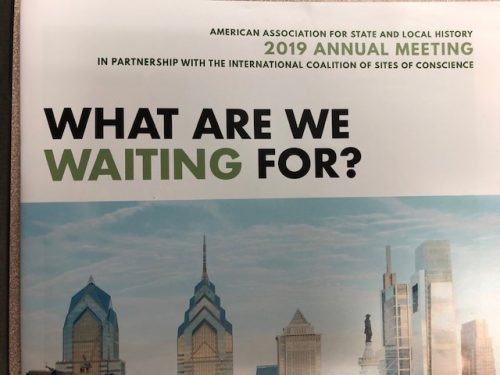Hanging Out in Philadelphia

A blog post by JMM Executive Director Marvin Pinkert. You can read more posts by Marvin here.

It wasn’t exactly a summer vacation, more of a busman’s holiday. I had been invited to attend a feedback session on the Community Catalyst Initiative being developed by the Institute of Museum and Library Services (IMLS). This was followed, two days later by the annual meeting of the American Association for State and Local History. In between, I had a chance to visit the Marvel: Universe of Super Heroes exhibit at the Franklin Institute, the recently developed Philadelphia Holocaust Memorial Plaza, the Barnes Foundation and the new Museum of the American Revolution. I skipped NMAJH, Eastern State Penn and the Philadelphia Museum of Art on this trip, because I had visited those fine museums earlier this year. I also met with former JMMers Avi Decter and Melissa Yaverbaum, who send warm regards to all their friends in Baltimore.
What did I learn from my sojourn to the city of brotherly love? Let me start with the friendly neighborhood Spiderman (pictured above) – one of several life-size figures in the exhibit positioned as photo opportunities. While the exhibit contained many original pieces of artwork, original artifacts from the movies, film clips and interactive devices, it was these statues that were the clear stars of the show. People came to the exhibit because they were interested in the stories of the Marvel characters, but they were even more interested in seeing themselves as part of that story. In many ways, the “theme” of the week was self-reflection in public spaces.
That theme could certainly be found in the demonstration of Augmented Reality (AR) in the Rare Books room of the Free Library of Philadelphia. There we were treated to a prototype of a new software package that combined a search for clues with AR icons as a reward. For example, finding three clues related to Edgar Allan Poe would make a squawking 3-D raven appear on your screen. Visitors could then put themselves into the picture, appearing to hold or pet the raven. The software, designed by Night Kitchen Interactive in Philadelphia, is something we might think about incorporating into a future core exhibit. I found an earlier version of what was demonstrated at the library at this online site.

Built on the site of America’s first Holocaust Memorial (a statue by sculptor Nathan Rappaport) right on the Ben Franklin Parkway, the plaza allows visitors to access the voices of Holocaust survivors tied to both the textual and aesthetic elements of the space. These pillars, for example, compare the US Constitution to the legal and social systems of the Third Reich. Voices accessible on your phone via the iWalk app allow you to hear witnesses of the deprivation of liberties in Germany. Yet another idea we might build on.
The Museum of the American Revolution is well worth a visit. While it remains at its core, a museum of military history, it goes out of its way to tell the battle story through multiple perspectives: loyalists as well as rebels, native peoples and African Americans, and women in many different roles. It benefits from a corps of knowledgeable docents who are proficient at tailoring the experience to the interests of their audience.

Lest you think my week was all fun and games, there was serious business at both conferences. The IMLS workshop offered participants the opportunity to test and review new tools under development for helping museums engage with their communities. Tools like “Journey Maps” (sample below) help institutions to track and evaluate projects that involve substantial community engagement over a period of years.

The AASLH Conference was co-sponsored by the Sites of Conscience organization, an international coalition of more than 275 historic sites and museums dedicated to “turning memory into action.” The title of this year’s conference, “What are We Waiting For?”, was a reference to the desire of much of the history museum world to engage in the tough work of swimming in the troubled waters of our times, paired with the fear of drowning in contemporary controversies.
One of the best workshops I attended at the conference was on “dialogic conversations” – a methodology for engaging visitors in difficult conversations in the hope of opening up channels for discourse in a polarized nation. Hint: the method involves asking questions that make the visitor a part of the story. Some of this thinking may be incorporated into future JMM exhibits and programs.

